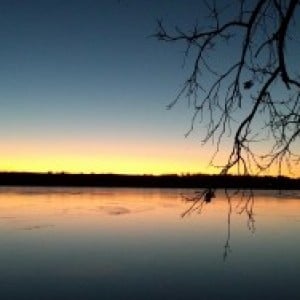I just purchased new Helix units last fall for my boat, and my goal this spring is to start using more SI and DI. I know there are plenty of advanced users on here, but could someone give me some good pointers for starting settings. More along the lines of depth vs distance out to sides and any other info for starters? There’s so much with these units that last fall I concentrated on mapping and 2d. Thanks in advance.
IDO » Forums » Fishing Forums » Toys for Big Boys » Humminbird Electronics » Beginner settings Side Imaging
Beginner settings Side Imaging
-
 rickwalley
Posts: 66March 31, 2018 at 10:55 am #1764197
rickwalley
Posts: 66March 31, 2018 at 10:55 am #1764197This might be worth a couple $20 dollar bills……and cut to the chase quicker? This guy seems to have a pretty good following. He also gives sonar seminars in certain metro markets that seem to always fill up fast.
https://www.technologicalangler.com/humminbird-helix-g2n-reference-guide
March 31, 2018 at 1:23 pm #1764230Thanks Rick! Definitely will look into them. Do you know if they are laminated so you could carry them in the boat?
 rickwalley
Posts: 66
rickwalley
Posts: 66 Bernard Campos
Posts: 27March 31, 2018 at 2:54 pm #1764249
Bernard Campos
Posts: 27March 31, 2018 at 2:54 pm #1764249Make sure your transducer is level for the speed you’re going to do most of your searching if you haven’t already. Makes a huge difference in the quality of the images.
I would start at 80′-100′ and just leave it there unless you fish really deep water. Mess with sensitivity and contrast until you learn to interpret things a bit, then you can add in range. Just pick a known piece of structure and look at it with different settings until you get a feel for what you are seeing. It doesn’t take too long and you’ll start to notice things that you’ll want other opinions on. That’s when looking at internet forums really helped me. When I went online and had no idea about anything I just got more confused.

I’m planning on getting out as soon as the ice is gone and doing some fooling around before the water warms. Seems like I can’t concentrate on learning the sonar if I think the fish are biting. Maybe that’s just me. There’s always more to learn.
April 2, 2018 at 11:53 pm #1764821Using a 7 I would not go past 60 feet with SI the screen is so small you will not see a lot of detail (fish) running my Helix 12 I very seldom go over 60 ft.
I never look at structure I do not care what is down and how it looks I only am looking for fish so I adjust my locator accordingly. I use the blue screen as fish show up as white and I also use a faster scroll speed as it will elongate fish and there shadows and make them easier to see. I have my sensitivity up on the screen at all times that way when depth and bottom changes I can adjust on the fly. Changing from soft to hard bottom if sensitivity is not turned down it washes out as it will get too bright to see any fish, going from hard to soft sensitivity needs to come up to adequately see fish.
It takes some time to get good using SI to it`s fullest once you do and learn to SEE fish it is a game changer..
April 3, 2018 at 9:10 am #1764864here are some good starting points. it’s really important to learn how to adjust your settings on the fly to match your conditions and get the best images you can. play around and see what happens when you change things! the best settings for “cool” SI or DI pictures of structure aren’t usually the best ones for locating fish, etc.
2D sonar
– 200kHz
– Jigging mode Off
– Switchfire: Clear in 12′ or less, Max in deeper water
– Sensitivity: 4SI
– 455kHz
– Chart Speed = boat mph +1 (ie., “4” at 3mph)
– Range 60′ for a 7 of smaller, 80′ for a 9 or larger
– Sensitivity 11
– Contrast 12
– Amber 1 colorDI
– wide coverage
– Sensitivity 12
– Contrast 10personally i don’t find those laminated settings cards to be all that useful. once you begin to understand what the settings do and how to adjust them you won’t need it anyway. however, i did attend one of the trainings he offers, and that was worth every penny…
 zooks
Posts: 942April 3, 2018 at 9:17 am #1764867
zooks
Posts: 942April 3, 2018 at 9:17 am #1764867This might be worth a couple $20 dollar bills……and cut to the chase quicker? This guy seems to have a pretty good following. He also gives sonar seminars in certain metro markets that seem to always fill up fast.
https://www.technologicalangler.com/humminbird-helix-g2n-reference-guide
I like Halfen’s cards and think they’re a nice place to start, got them for my dad when he first got his unit and cut the learning curve down quite a bit.
BBC boards image interpretation
Google it
IMO once you get comfortable with the mechanics of how the unit works and what the settings mean, the BBC boards have invaluable info on them.
April 3, 2018 at 5:12 pm #1765018The best thing and the hardest is leave all your fishing gear at home and spend a day learning to use your Helix and interpret what you are seeing and how to adjust it. Come back and ask questions.
You must be logged in to reply to this topic.